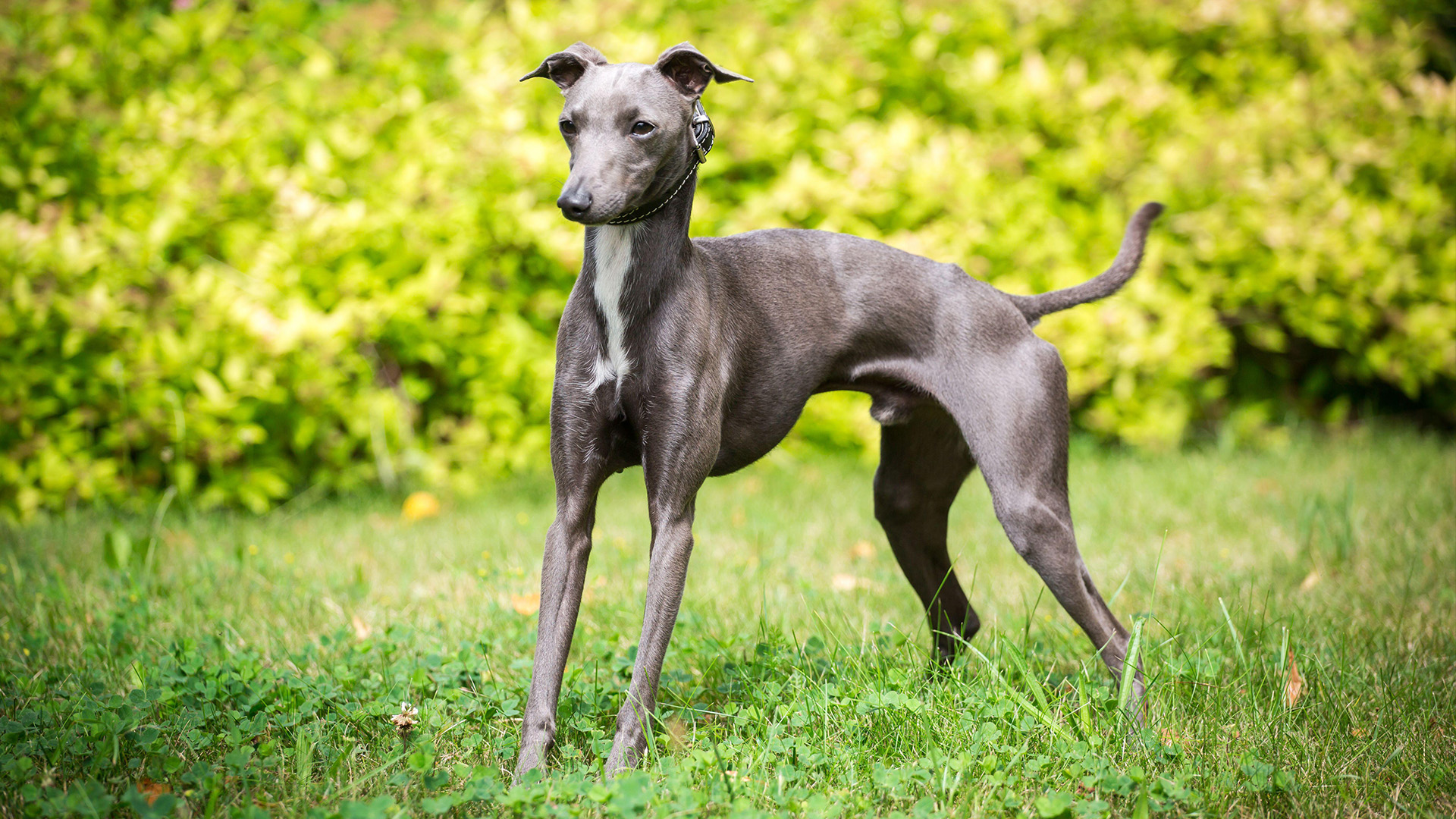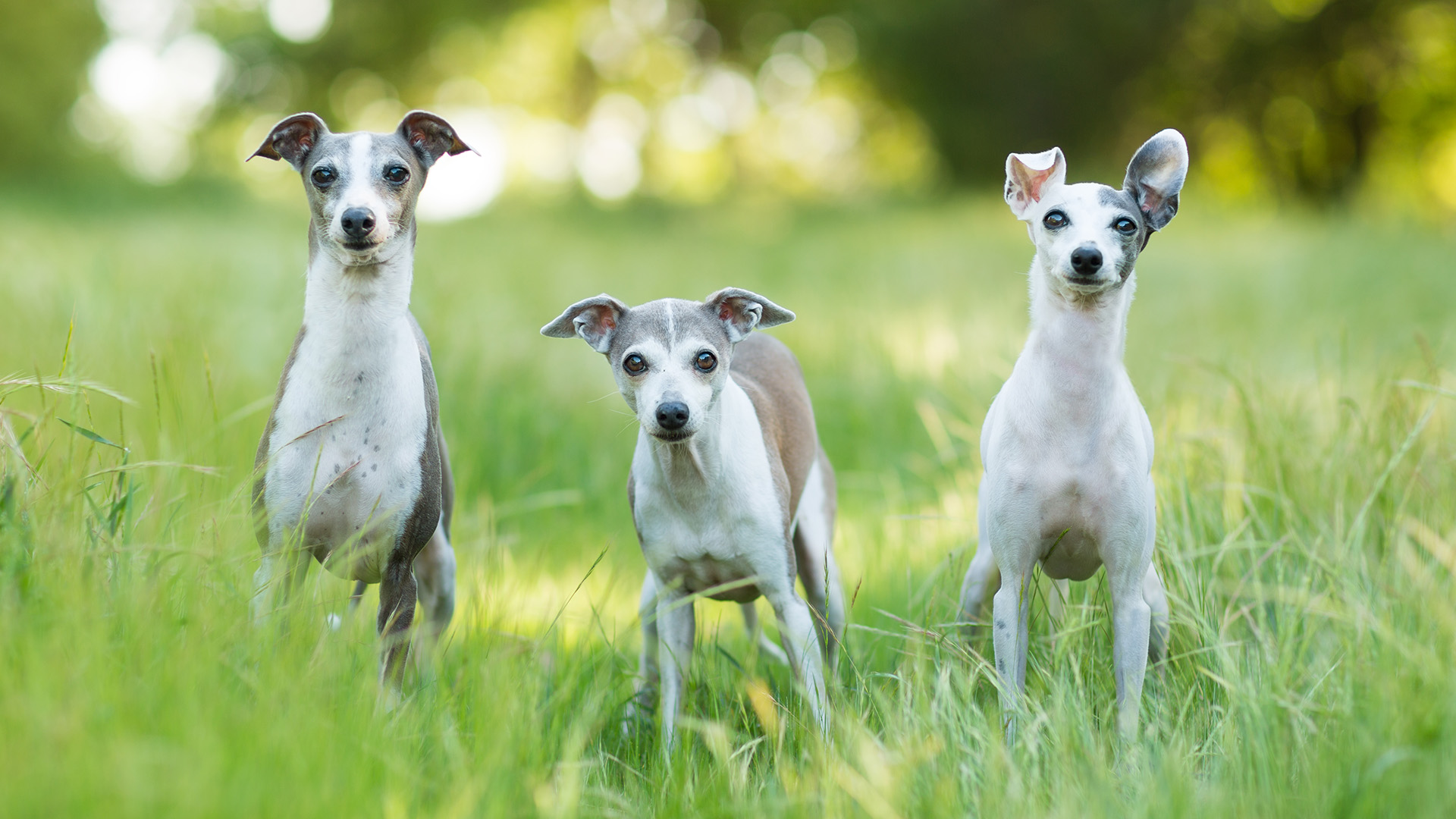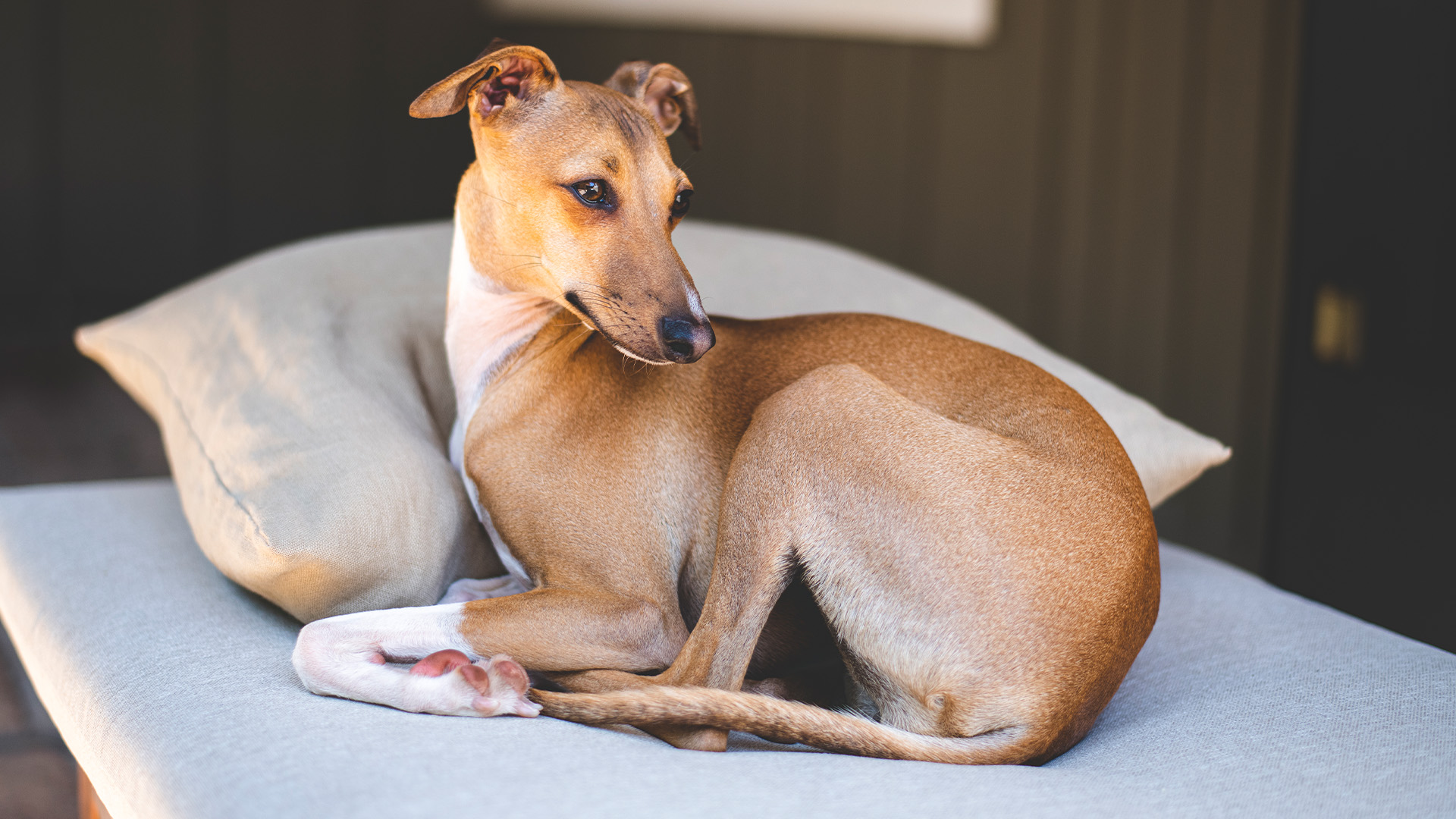Italian Greyhounds are delicate souls that need looking after but they’ll repay you tenfold with affection
Small, energetic and lots of fun, Italian Greyhounds have become popular lap dogs


Life expectancy: 12-15 years
Size: 13-15 inches (male); 13-15-inches (female)
Coat: Smooth and glossy
Temperament: Affectionate, mischievous, agile, intelligent, athletic
Exercise needs: Around an hour daily
Origin/native country: Greece/Turkey
Italian Greyhounds are small sighthounds that initially proved to be popular among royalty and nobility. Bred to hunt hare and rabbit, they soon showed themselves to be wonderful companion dogs and they arrived in the UK and US in the 19th century.
The most obvious characteristic of this breed is its size. It stands no taller than 15 inches and you won’t find many weighing more than 11lbs, which is much smaller than a whippet. But that size hasn’t always gone in this breed’s favour. There was a time when the delicate nature of the Italian Greyhound meant too many decided to look elsewhere. They almost became extinct but extra breeding made them hardier.
Whether or not that means Italian Greyhounds are ideal for you, however, is another matter. But, to help you make up your mind, we’ve looked more closely at this breed with the help of expert vet Dr Rebecca MacMillan.
Do Italian Greyhounds need a lot of exercise?
Italian Greyhounds have an abundance of energy so you need sufficient time to ensure they’re kept physically stimulated.
“Italian greyhounds are athletic dogs that need at least an hour of exercise each day,” says Dr Rebecca MacMillan. But it’s not quite as easy as taking them for a gentle stroll.
Although walks are important, this breed needs some playtime each day as well so you need to engage in games of fetch or invest in the best dog puzzle toys. This breed also tends to burn off its energy in short sprint sessions, but bear in mind that Italian Greyhounds are among the fastest dog breeds, capable of reaching speeds of up to 37mph.
“These dogs are built for speed so they need to be able to run freely off the leash, but it must be done safely,” Dr MacMillan warns. “You must make sure you work on your dog’s recall training and only exercise them in a secure space. Sighthounds have a high prey drive and will take off after squirrels and birds.”
Get the best advice, tips and top tech for your beloved Pets
Are Italian Greyhounds easy to train?
Italian Greyhounds are one of the best dog breeds for first time owners and, according to Dr MacMillan, much of that is because they are “very clever dogs meaning that they can pick up their training quickly – if they are not too distracted.”
Things to work on are leash training, recall and separation anxiety but the main problem is that Italian Greyhounds can be quite dismissive of training and it will generally take between 40 and 80 repetitions for this breed to understand a new command.
That said, they’ll obey the first command more than 30% of the time and, with reward-based training, you’ll find Italian Greyhounds pose few problems. Always remember that negative feedback goes down like a lead balloon with this breed so be patient and positive at all times.

Do Italian Greyhounds make good family pets?
You will find that Italian Greyhounds are mischievous yet affectionate. They’re also loyal and amazing fun to have around.
“These dogs have a sweet temperament,” Dr MacMillan says.
Italian Greyhounds are one of the best dog breeds for apartments, too, because, while energetic, they’re also something of a couch potato.
“They’re very adaptable and make for a great family dog, provided they have been properly socialized,” she adds.
Care must be taken if you have children, however. Although Italian Greyhounds are loving, they’re also small and delicate and they won’t appreciate rough play. Children will need to be taught to be careful and respectful.
Do Italian Greyhounds bark a lot?
This breed is not inherently vocal, but some Italian Greyhounds will bark when they see or hear prey.
“Making sure they have been properly socialized from an early age will reduce the risk of any barking tendencies,” Dr MacMillan says. “Dogs that are anxious around unfamiliar animals, people or situations will be much more vocal.”
It’s also important to keep their mind and body ticking over.
“Dogs that are under-exercised or not receiving enough mental stimulation will be much more likely to have behavioural issues like excessive barking,” Dr MacMillan continues.

Do Italian Greyhounds need a lot of grooming?
Although they require daily stimulation, Italian Greyhounds are a low maintenance dog breed and that’s not just because they love to sleep and have a wonderful temperament.
“Italian Greyhounds are low shedding, with a short, single layered coat. Weekly brushing should be enough to keep their coat looking good,” Dr MacMillan says.
The main issue is that Italian Greyhounds have little fur and slender bodies so they need to be kept warm. It’s why they are among the best dog breeds for warm climates and why you will also often see Italian Greyhounds wearing dog coats indoors. To that end, you’re going to have to invest in a lot of snoods, boots, coats and jumpers to protect them from the cold.
Wisdom Panel Breed Discovery DNA Kit | Amazon
Not sure exactly what breed your dog is? This kit screens for 365+ breeds – because knowing every detail about your dog helps you understand how best to care for them.
Italian Greyhound health problems
The Italian Greyhound is a generally healthy dog, which is why they tend to live up to 15-years-old. But they do have some common health complaints common in all small breeds, including dental disease.
“These little dogs are prone to heavy tartar build up, gum inflammation and tooth loosening,” Dr MacMillan says. “Brushing their teeth daily from an early age will reduce the risk of dental disease occurring.”
Luxating patella can also be found in Italian greyhounds.
“The kneecap on one or both hind legs slides out of position causing limping, discomfort, and possibly the early onset of arthritis,” she adds. “Some milder cases can be managed conservatively but more severe cases can require surgery.
Don’t forget, these are delicate little dogs that tend to race around.
“As such, I find that they are more prone to bone fractures and skin wounds than many other breeds,” Dr MacMillan says.
Should I get an Italian Greyhound?
Italian Greyhounds are super little dogs and their adaptable, affectionate nature means they’re not only practical but adorable. They aren’t ideally suited to life with a family that has young children and you shouldn’t leave this breed alone for long periods of time.
But you’ll find they’ll quickly form a strong emotional bond with you and they’ll prove delightful thanks to their spritely personality.
The Complete Guide to Italian Greyhounds | Amazon
After reading this book, you'll understand everything there is to know about training, feeding, socializing, grooming, and exercising an Italian Greyhound.
Read next: Greyhound breed profile and Italian Greyhound vs whippet. Or read up on Kylie Jenner's dogs and her love for Italian Greyhounds.

Rebecca is a veterinary surgeon who graduated in 2009 from the Royal Veterinary College in London. She has a wealth of experience in first opinion small animal practice, having done a mixture of day-to-day routine work, on-call emergency duties and managerial roles over the years. Rebecca enjoys medicine in particular and she is proud to have recently achieved a BSAVA postgraduate certificate in small animal medicine (with commendation).
She writes on various feline and canine topics, including behavior, nutrition, and health. Outside of work and writing she enjoys walking her own dog, spending time with her young family and baking!
Edited by Georgia Guerin.
This feature was last updated in May 2025.

David Crookes has been a journalist for almost 30 years and he has written for a host of magazines, newspapers, websites and books including the World of Animals Annual, BBC Earth, Live Science, The Independent and Tom’s Guide.
Born in England, he lives with two cats but he’s also keenly interested in the differences between the huge number of dog breeds – in fact, you can read many of his breed guides that he’s written in collaboration with vets here on PetsRadar.
With a lifelong passion for technology, too, he’s always on the lookout for useful devices that will allow people to keep their pets happier and healthier, and provide them more time to spend together.
David has a degree from Durham University, as well as postgraduate diploma in journalism from the University of Central Lancashire.


